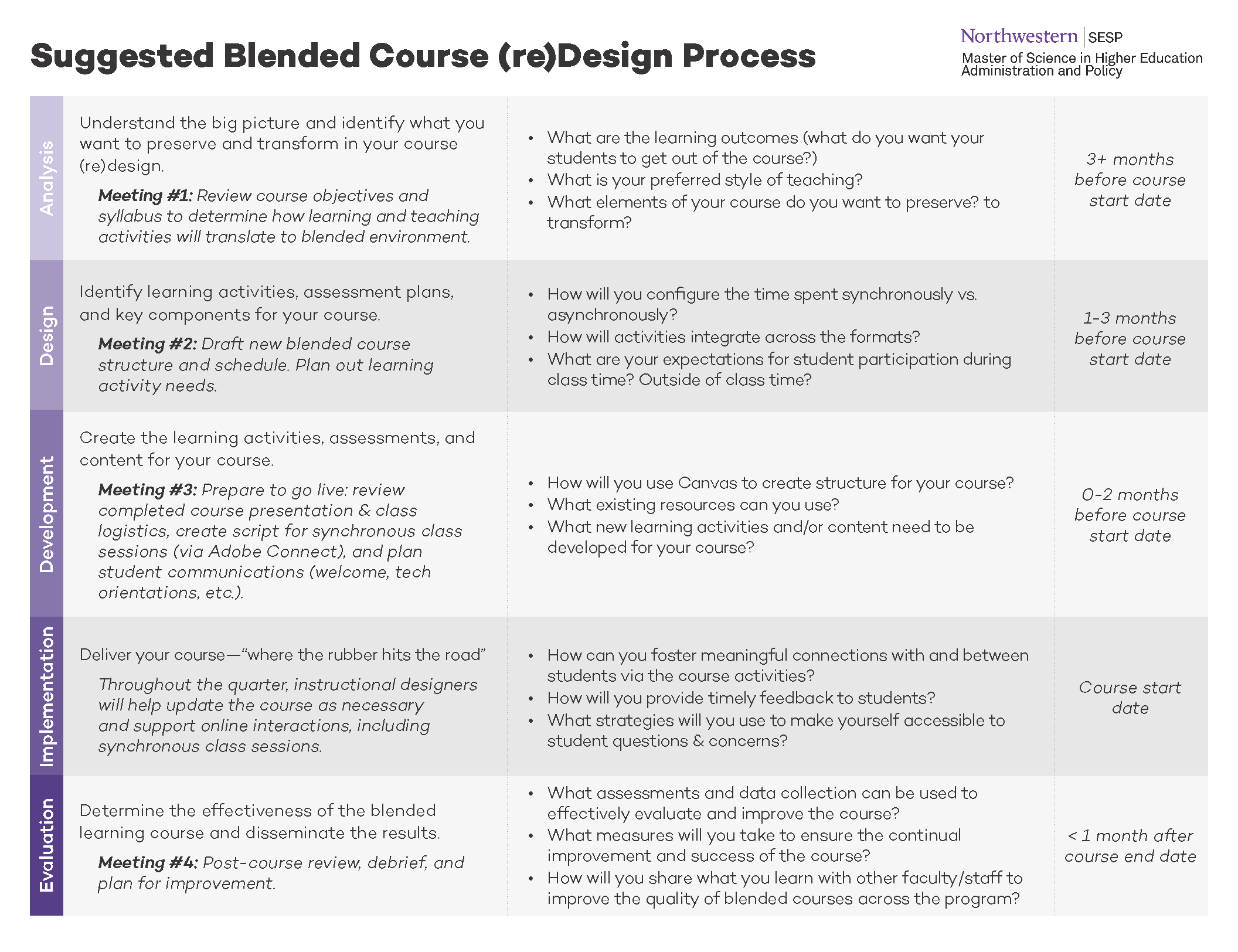Faculty Development
Ongoing technical support and faculty buy-in during the course redesign process are critical for success in the blended format.In Brief
Instructional designers follow a structured course design process, which based on the ADDIE model, emphasizes faculty involvement and ongoing evaluation. While the process is structured, course development is not ‘one size fits all’ - each course is approached individually. Emphasis is placed on approaching each design meeting with a clear focus and providing faculty with ideas for evidence-based learning activities.
Faculty are provided with ongoing resources, including technical support during synchronous sessions and continual access to instructional designers.
Detail
From the beginning, the higher education program and instructional designers approached course design, development, and implementation as a highly-individualized process, following the ADDIE model while working with faculty to redesign courses in a way that best reflected their content and teaching style (Figure 6). The willingness of instructors to engage in meaningful redesign of their course and modify their teaching practices likely contributed significantly to satisfaction and engagement reported in each class. While the instructional designers estimated the amount of time spent working directly with faculty in each stage of the ADDIE design process, this comparison did not appear to yield any relationship to reported course satisfaction or interaction. Instead, it appeared to be the mindset of faculty engaging in the redesign and teaching of the blended format courses which had the greatest impact.

Instructional designers provided ongoing support to faculty throughout the course, including participating in every online synchronous class session to manage the technological needs of the class and address any issues that arose with faculty or students. In feedback from faculty, this was cited as one of the most beneficial aspects of the overall teaching experience and several instructors said they couldn’t imagine teaching without this support.